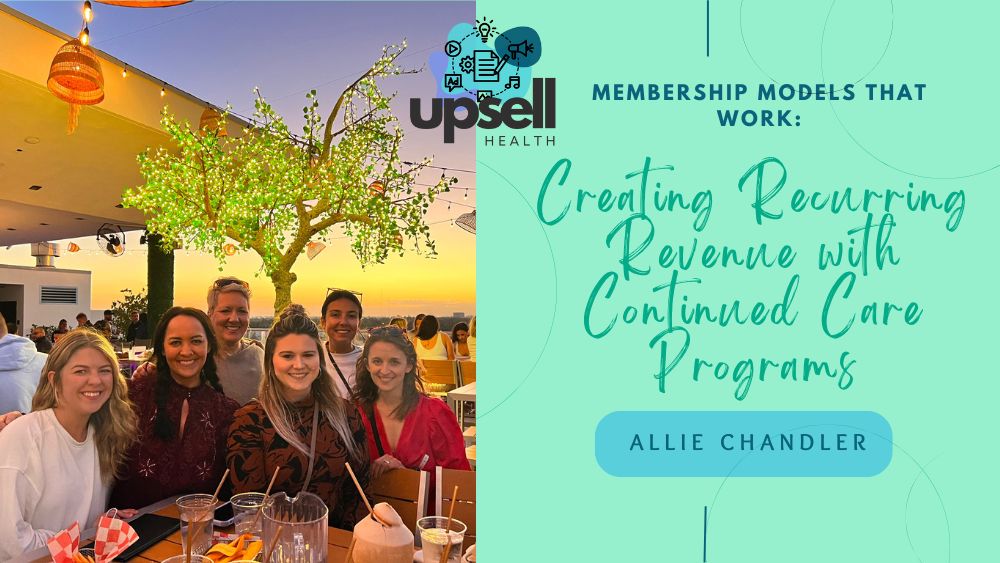Are one-off appointments and packages leaving your practice vulnerable to income volatility? The feast-or-famine cycle is all too common in wellness businesses, where a fully booked month can be followed by weeks of concerning calendar gaps. Membership models offer a compelling solution—creating predictable, recurring revenue while providing the ongoing support many clients need for lasting transformation. But not all membership structures are created equal, and the wrong model can lead to practitioner burnout or client dissatisfaction.
Article Summary:
- Membership models create financial stability through predictable, recurring revenue streams while improving client outcomes through consistent care
- The most successful wellness memberships align business sustainability with genuine client needs and transformation journeys
- Different membership structures serve different client types, practice models, and practitioner strengths
- Implementation requires careful planning around pricing, delivery methods, and retention strategies
- Transitioning existing clients to membership models requires thoughtful communication focused on enhanced value and outcomes
The One-and-Done Dilemma
Traditional wellness practice models often revolve around single appointments or limited packages. While this approach works for acute interventions, it fails to address two fundamental realities: lasting wellness requires ongoing support, and sustainable businesses need predictable revenue.
The typical client journey in wellness isn’t linear—it’s cyclical, with periods of intensive support followed by maintenance and occasional recalibration. When your business model doesn’t reflect this natural cycle, both client outcomes and practice stability suffer. Clients fall off their protocols without accountability, while practitioners face constant pressure to find new clients rather than serving existing ones more deeply.
The Membership Revolution
Recurring revenue models have transformed numerous industries, from software to fitness to media. The wellness field is particularly well-suited for membership approaches because health transformation is inherently a long-term process requiring consistent support, accountability, and adjustments.
Effective membership models in wellness create a win-win scenario:
- Clients receive the ongoing support necessary for lasting change
- Practitioners develop deeper relationships with clients over time
- Businesses gain financial stability through predictable revenue
- Client outcomes improve with consistent care and accountability
- Administrative workload decreases with standardized systems
The key is designing a membership that genuinely serves your specific client population while supporting your business goals and personal sustainability.
Six Membership Models for Wellness Practitioners
There’s no one-size-fits-all approach to wellness memberships. The right model depends on your clinical expertise, client needs, and business objectives. Here are six proven structures to consider:
1. The Concierge Care Model
Structure: Unlimited or priority access to practitioner support for a premium monthly fee
Best for: Functional medicine doctors, naturopaths, and practitioners working with complex health cases requiring frequent adjustments
Key elements:
- Priority booking for appointments (often same-day or next-day)
- Direct communication channel (text, email, or portal)
- Regular check-ins and protocol adjustments
- Inclusive or discounted labs and supplements
- Extended appointment times
Example pricing: $200-$500+ monthly
2. The Hybrid Access Model
Structure: Combines scheduled appointments with digital support between visits
Best for: Nutritionists, health coaches, acupuncturists, and practitioners balancing in-person care with virtual support
Key elements:
- Monthly or quarterly in-person/virtual appointments
- Unlimited messaging through practice platform
- Weekly group Q&A sessions
- Resource library access
- Community component for peer support
Example pricing: $97-$297 monthly
3. The Group Transformation Model
Structure: Primarily group-based support with limited 1:1 touchpoints
Best for: Coaches and practitioners focused on specific outcomes where group dynamics enhance results
Key elements:
- Weekly group coaching or education sessions
- Monthly 1:1 check-ins
- Structured curriculum or protocol
- Accountability partnerships
- Community forum or discussion board
Example pricing: $67-$197 monthly
4. The Digital Resource Model
Structure: Minimal 1:1 interaction with focus on digital resources and self-paced implementation
Best for: Practitioners with scalable methodologies and educational content
Key elements:
- Extensive resource library (protocols, recipes, workbooks)
- Monthly group Q&A sessions
- New content delivered regularly
- Self-assessment tools
- Optional 1:1 sessions at discounted rates
Example pricing: $27-$97 monthly
5. The Tiered Access Model
Structure: Multiple membership levels offering different degrees of access and support
Best for: Practices with diverse client needs and varied price sensitivities
Key elements:
- Entry-level, mid-tier, and premium options
- Clear differentiation between tiers
- Ability to move between levels as needs change
- Core value delivery at all tiers
- Premium services reserved for higher tiers
Example pricing: $47-$497 monthly across tiers
6. The Maintenance Model
Structure: Designed specifically for clients who have completed intensive programs and need ongoing support
Best for: Any practice that offers intensive upfront work followed by longer maintenance periods
Key elements:
- Quarterly review appointments
- Monthly accountability check-ins
- Access to maintenance protocols and resources
- Community support from others in maintenance phase
- Priority access if acute issues arise
Example pricing: $47-$147 monthly
Upsell Health Foundations: The CARES Membership Framework™

Beyond Testimonials: Building Credibility Into Your Membership
While client success stories remain powerful, there are multiple ways to establish credibility for your membership model:
Data-Driven Results
Track and share specific outcomes from your membership program:
- Average biometric improvements over specific timeframes
- Percentage of clients achieving key milestones
- Adherence rates compared to non-membership clients
- Average length of membership (demonstrating sustained value)
Transparent Methodology
Clearly articulate the research and principles behind your approach:
- Reference relevant studies supporting your methodology
- Explain your unique framework and why it works
- Share your professional development journey
- Document how your approach has evolved based on results
Professional Endorsements
Leverage recognition from respected institutions or colleagues:
- Partnerships with complementary practitioners
- Features in professional publications
- Speaking engagements at industry conferences
- Certifications and specialized trainin
Process Demonstration
Show rather than tell how your membership delivers value:
- Create “behind-the-scenes” content showcasing your methods
- Offer a scaled-down free experience (webinar, mini-course)
- Publish case studies detailing exact protocols and timelines
- Share anonymized client communications demonstrating your support style
Implementation Essentials
Launching a successful membership program requires careful planning around several key areas:
Pricing Strategy
Your pricing must balance value delivery, market positioning, and operational sustainability:
- Calculate your true cost-per-client including all time and resources
- Research competitive offerings while acknowledging your unique value
- Consider the lifetime value of a membership client vs. package clients
- Test different price points with limited-time offers before finalizing
Technology Infrastructure
The right technology stack simplifies membership management:
- Client management systems with recurring billing (Practice Better, Cliniko)
- Community platforms if applicable (Circle, Mighty Networks)
- Content delivery systems for resources (Kajabi, Teachable, or WordPress)
- Communication tools that maintain boundaries (portal messaging vs. direct text)
Content and Delivery Calendar
Plan a systematic approach to content and touchpoint delivery:
- Map the first 90 days of member experience in detail
- Create templates for regular communications
- Develop a content library covering common questions and challenges
- Establish clear rhythms for different types of interactions
Retention Strategy
Minimizing churn requires proactive retention efforts:
- Identify key satisfaction milestones at 30, 60, and 90 days
- Create “save” protocols for members considering cancellation
- Implement regular value reminder communications
- Gather and implement feedback continuously
Resources You'll Love
- Practice Better or Cliniko – Practice management platforms with membership functionality
- “The Automatic Customer” by John Warrillow – Comprehensive guide to subscription business models
- Circle.so – Platform for creating engaging member communities
- Churn Buster – Tool for reducing failed payments and accidental cancellations
Action Steps:
- Conduct a Model-Fit Assessment (60 minutes)
Evaluate which membership model aligns best with your practice type, client needs, and personal strengths. Consider your ideal work style and the outcomes your clients most value. - Map Your Member Journey (90 minutes)
Document what the first 3 months of membership would look like. Include all touchpoints, content delivery, and expected milestones or transformations. - Calculate Your Numbers (45 minutes)
Determine your target membership size, pricing, and financial projections. Balance your capacity with your revenue goals to ensure sustainability. - Design Your Pilot Program (60 minutes)
Create a 3-month pilot version of your membership to test with existing clients or a small group of new clients. Include specific feedback mechanisms. - Develop Your Launch Communications (60 minutes)
Craft the messaging for introducing your membership, focusing on the transformation it provides rather than just the features. Include FAQs addressing common concerns.
Affirmation:
I create sustainable structures that allow me to serve deeply while building a practice that supports my wellbeing. My membership model creates wins for both my clients and my business, allowing me to make a greater impact while enjoying greater stability.




